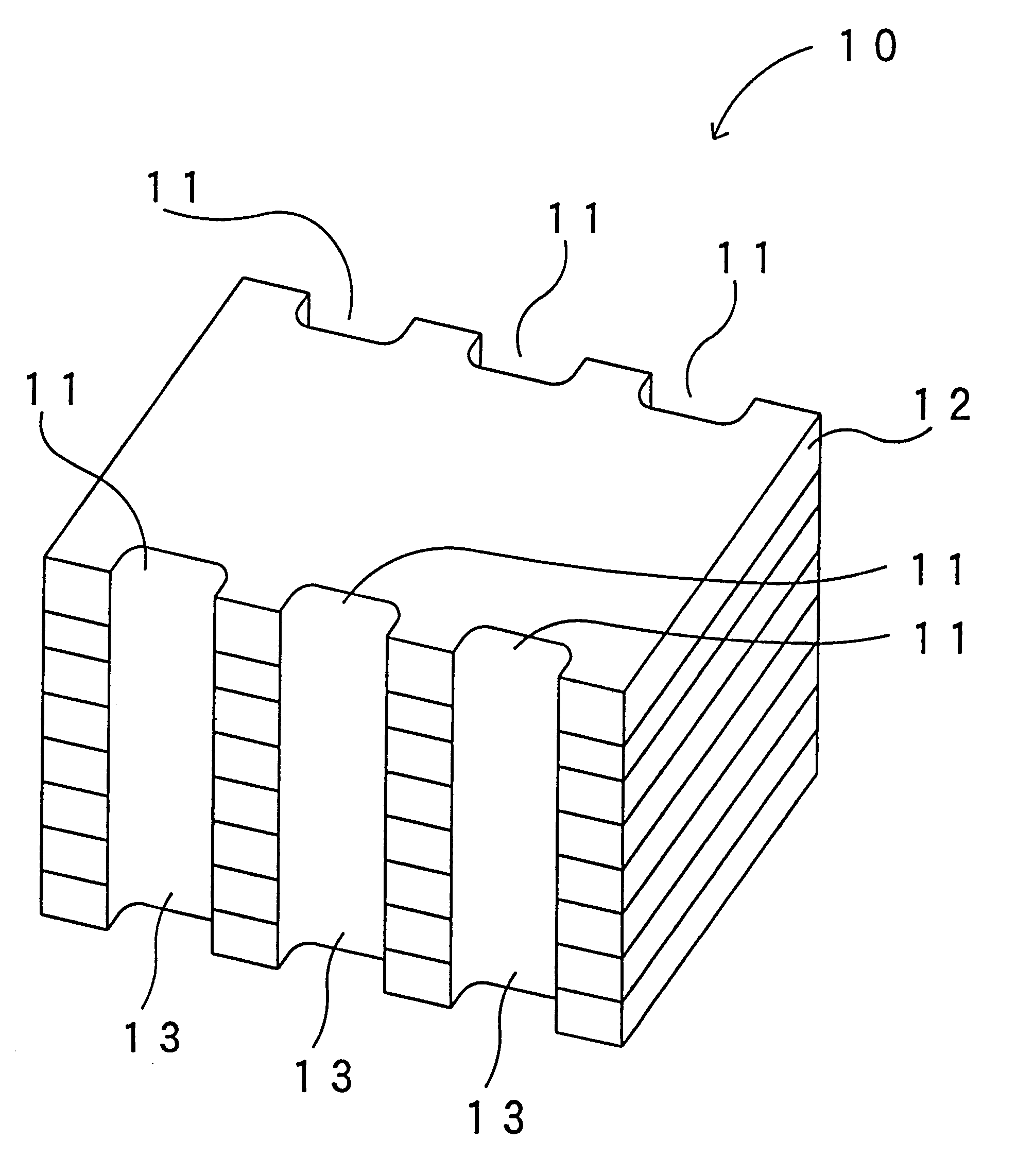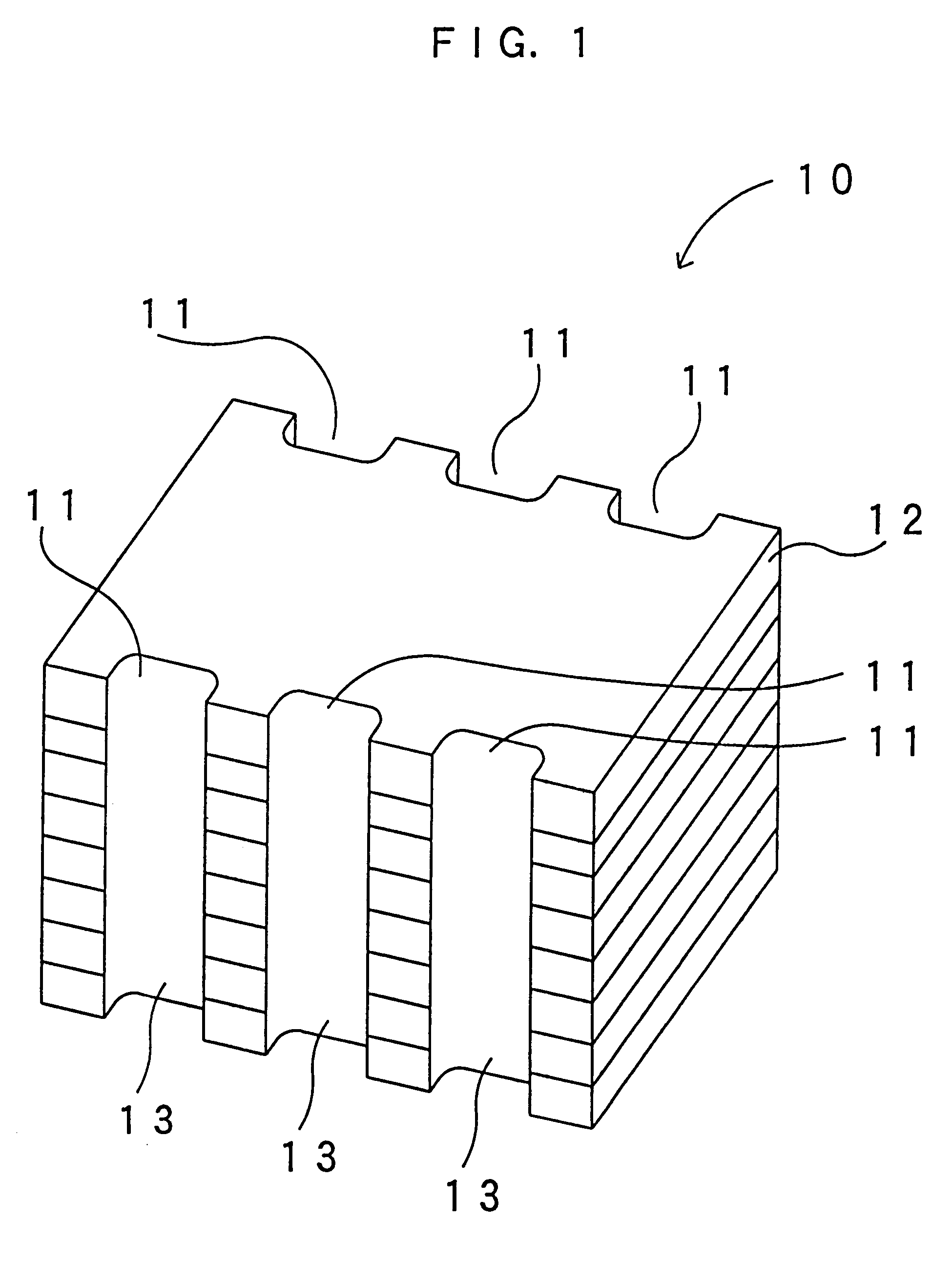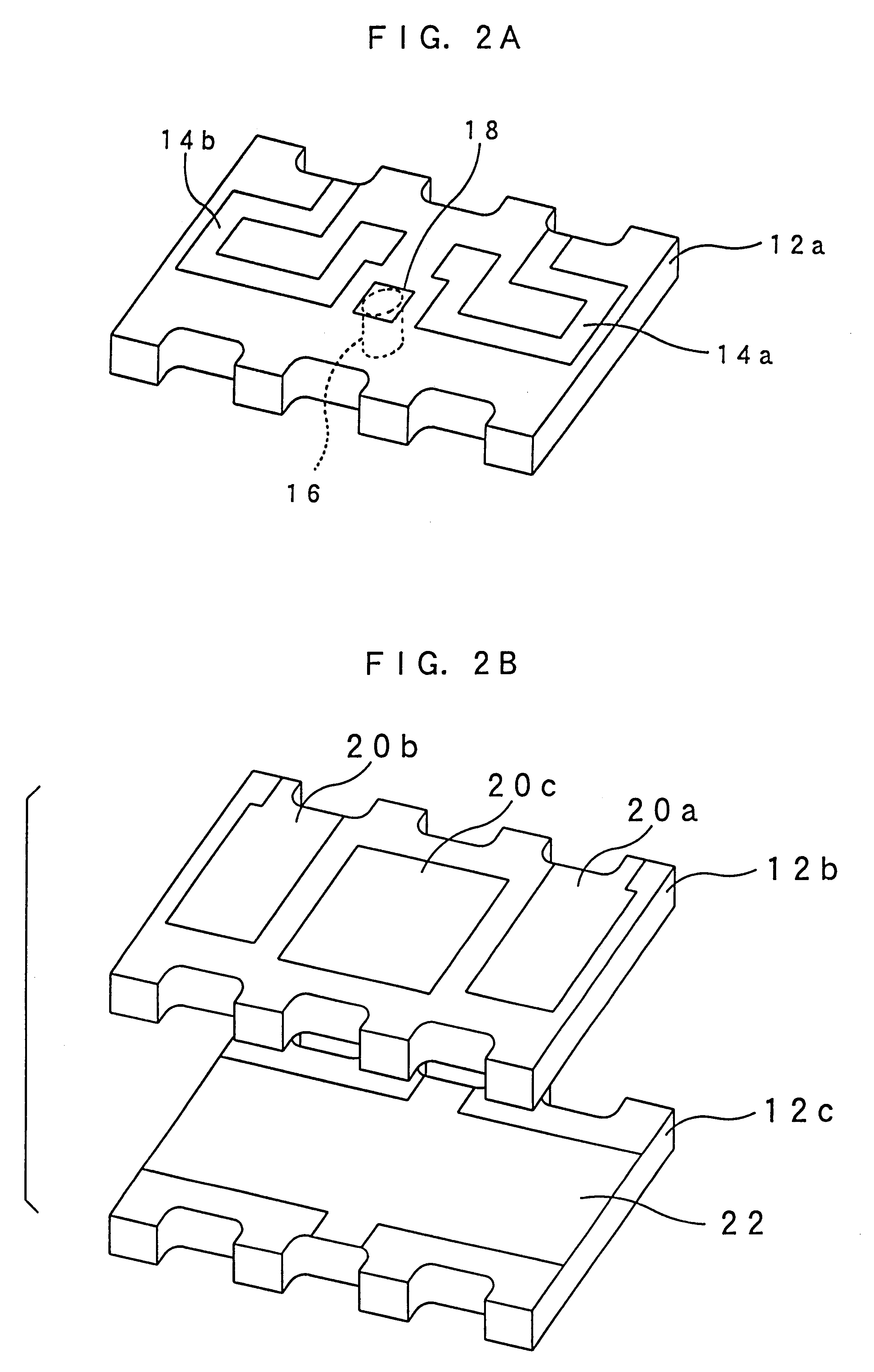Glass-ceramic composition, circuit substrate using the same and manufacture method thereof
- Summary
- Abstract
- Description
- Claims
- Application Information
AI Technical Summary
Benefits of technology
Problems solved by technology
Method used
Image
Examples
Embodiment Construction
1 2 3 4 5 1 2 3 4 ALUMINA 50 45 55 50 50 50 50 30 70 GLASS 50 55 45 50 50 50 50 70 30 (GLASS COMPOSITION) SiO.sub.2 49 .rarw. .rarw. 56 47 47 53 49 .rarw. Al.sub.2 O.sub.3 5 .rarw. .rarw. 9 6 4 5 5 .rarw. B.sub.2 O.sub.3 5 .rarw. .rarw. 5 8 8 7 5 .rarw. Li.sub.2 O -- -- -- -- -- 2 3 -- -- Na.sub.2 O 2.5 .rarw. .rarw. 2.5 2 4 -- 2.5 .rarw. K.sub.2 O 1.5 .rarw. .rarw. 1.5 2 -- -- 1.5 .rarw. CaO 5 .rarw. .rarw. 8 4 7 9 5 .rarw. MgO -- -- -- 1 1 1 -- -- -- ZnO -- -- -- -- 3 -- -- -- -- PbO 32 .rarw. .rarw. 17 27 27 23 32 .rarw.` GLASS TRANSITION 540 .rarw. .rarw. 609 545 493 530 540 .rarw. POINT Tg (.degree. C.) YIELD POINT Td (.degree. C.) 577 .rarw. .rarw. 651 575 523 559 577 .rarw. SOFTENING POINT 678 .rarw. .rarw. 762 685 609 651 678 .rarw. Ts (.degree. C.) (TsTd) 101 .rarw. .rarw. 111 110 86 92 101 .rarw. THERMAL EXPANSION 64 .rarw. .rarw. 60 58 77 66 64 .rarw. COEFFICIENT (.times.10.sup.-6 / .degree. C.)
Test on Various Properties of Ceramic
The obtained green sheet was fired at a fi...
PUM
| Property | Measurement | Unit |
|---|---|---|
| Angle | aaaaa | aaaaa |
| Angle | aaaaa | aaaaa |
| Angle | aaaaa | aaaaa |
Abstract
Description
Claims
Application Information
 Login to View More
Login to View More - R&D
- Intellectual Property
- Life Sciences
- Materials
- Tech Scout
- Unparalleled Data Quality
- Higher Quality Content
- 60% Fewer Hallucinations
Browse by: Latest US Patents, China's latest patents, Technical Efficacy Thesaurus, Application Domain, Technology Topic, Popular Technical Reports.
© 2025 PatSnap. All rights reserved.Legal|Privacy policy|Modern Slavery Act Transparency Statement|Sitemap|About US| Contact US: help@patsnap.com



